If you are heading to the Greek island of Zakynthos, you might like to learn a bit about the island’s history and culture. While the beaches are amazing, I get a bit fidgety after 5 minutes on a sun lounger and enjoy exploring a bit more of what Zante (as it’s also known) has to offer. Here are a few places to visit that will give you an insight into the history of this popular Greek island.
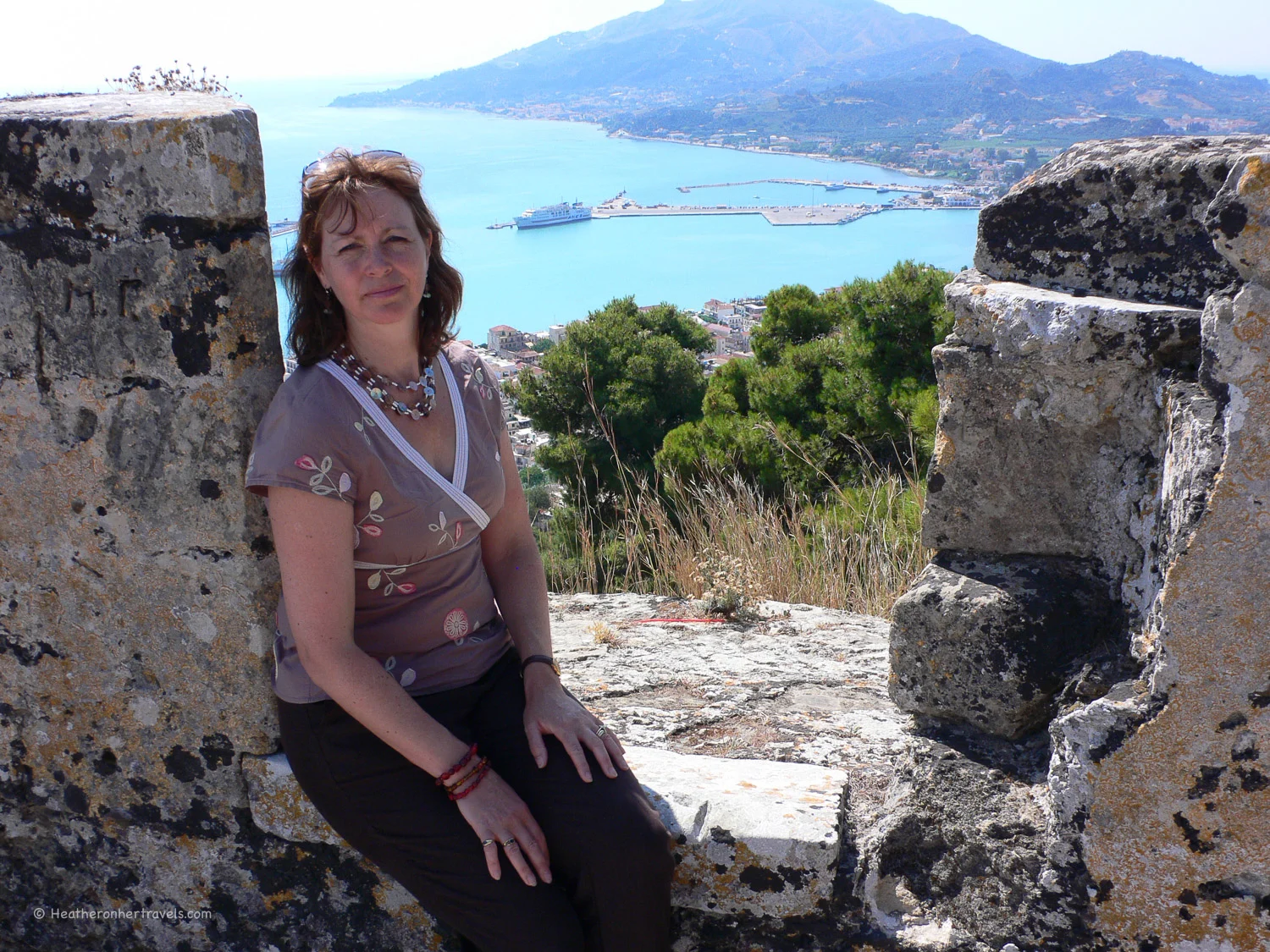
The Venetian Fort at Bohali
Starting in Zante town, I’d suggest that you hike, drive or take the small tourist train up to Bohali. This hill overlooks the town where you’ll find the Venetian fort or Kastro.
The fort occupies a strategic position on the top of the hill with views in all direction, over the harbour and towards the island interior. It dates back to the 15th century and was destroyed by the Turks in 1460. Later it was repaired with the help of the Venetians and was at one point the capital of the island.
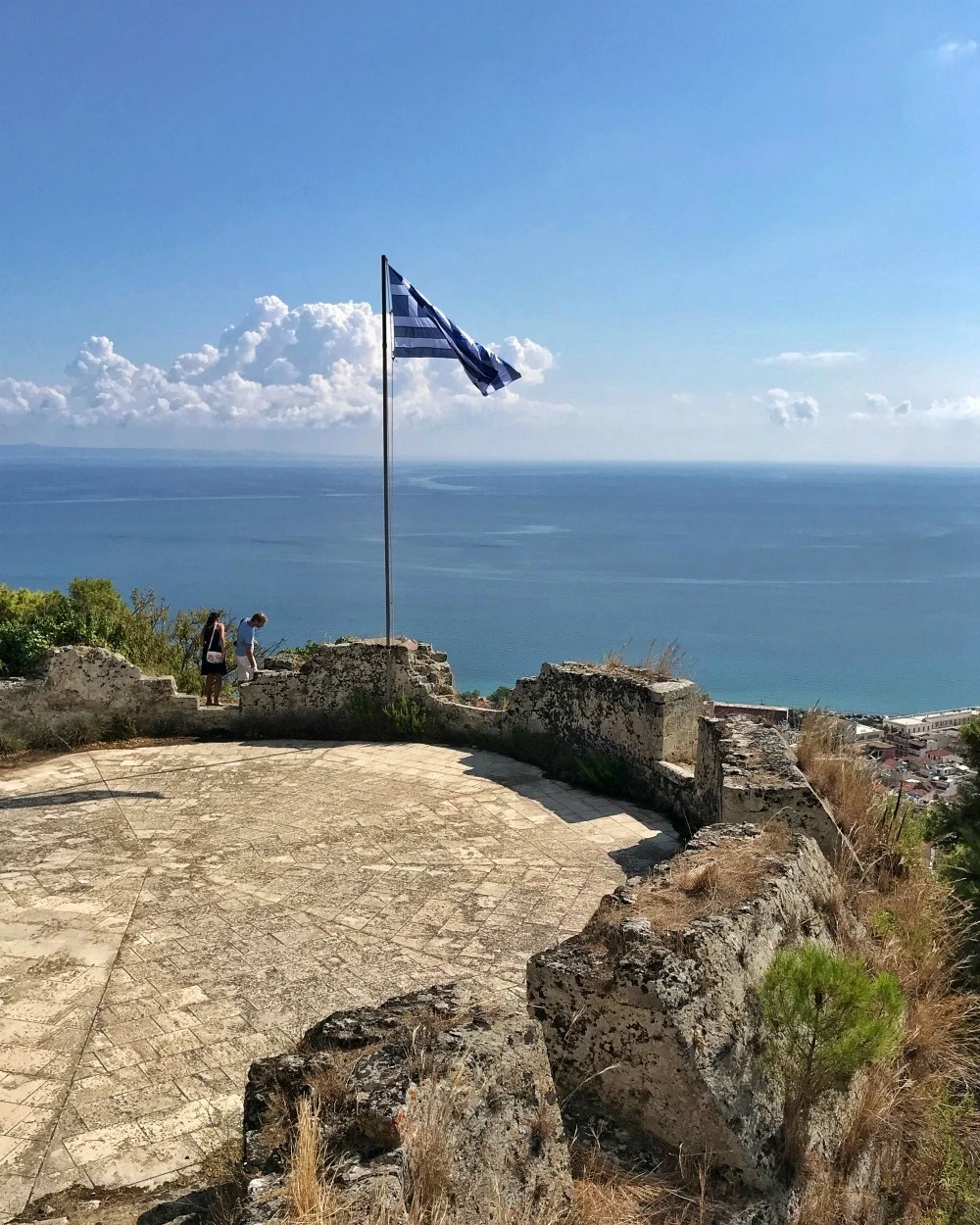
Once you pass through the stone gates carved with the Venetian lion, you enter a surprisingly large area. This would have once contained the whole garrison and supporting village but now only a few buildings remain.
The area is now covered with pine trees which make it cool and shady in summer time. You can see some of the old cannons and prison cells.
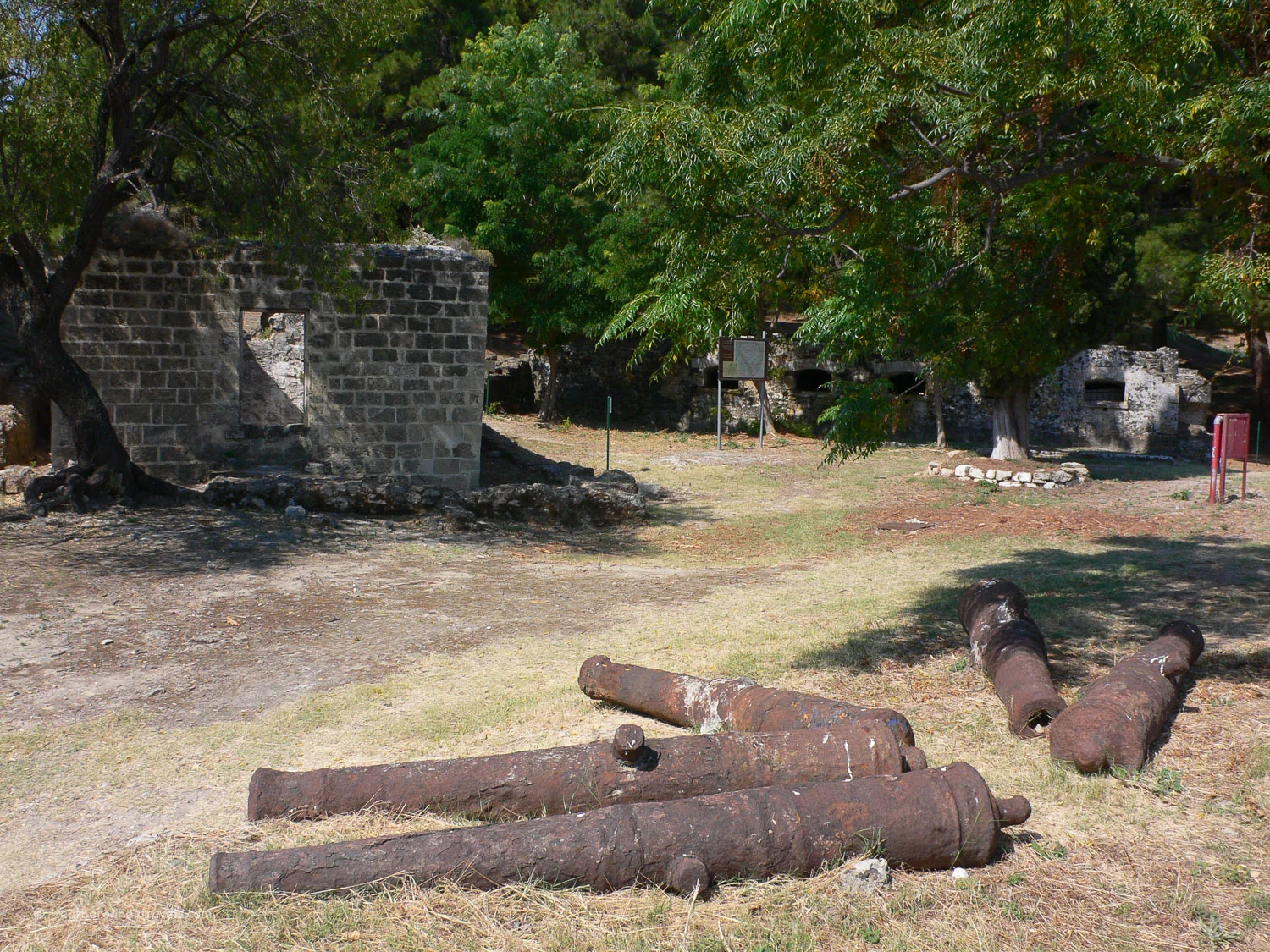
Looking over the ramparts the view of the town and the harbour is fantastic. Finish your visit by taking a Frappé in one of the stylish bars along the terrace below the fort. This is a favourite place for the Greeks to come in the cool of the early evening.
Zakynthos Museum of Art
A short walk from Romas Mansion and you’re in Solomos square, named after the famous Zakynthian poet, Dionysios Solomos. Solomos wrote the words of the Greek National Anthem.
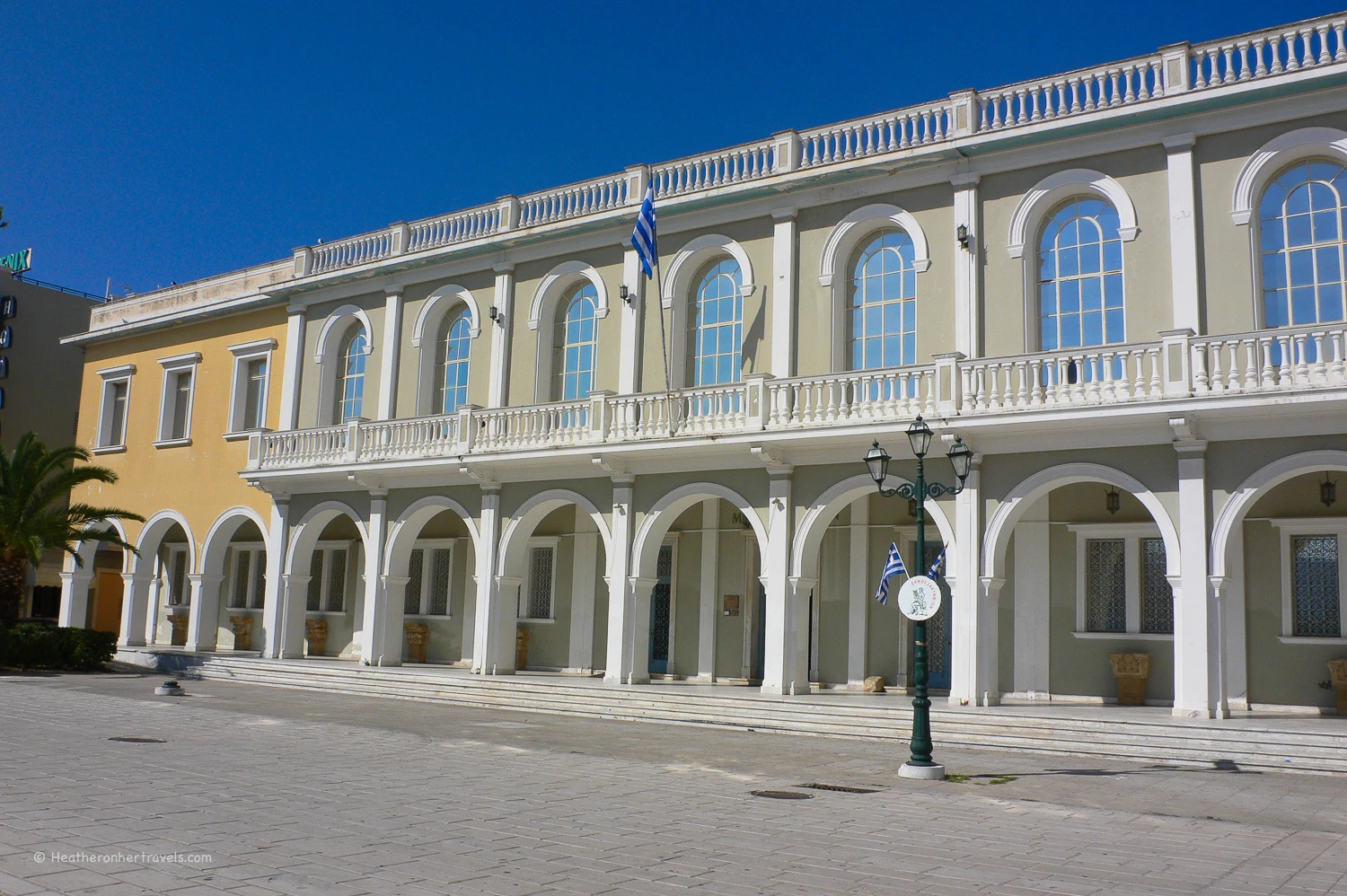
The colonnaded building on the side of the square that faces the harbour, houses the Zakynthos Museum. This is more of an art gallery for the religious artworks that were rescued from churches and monasteries around the island after the earthquake struck.
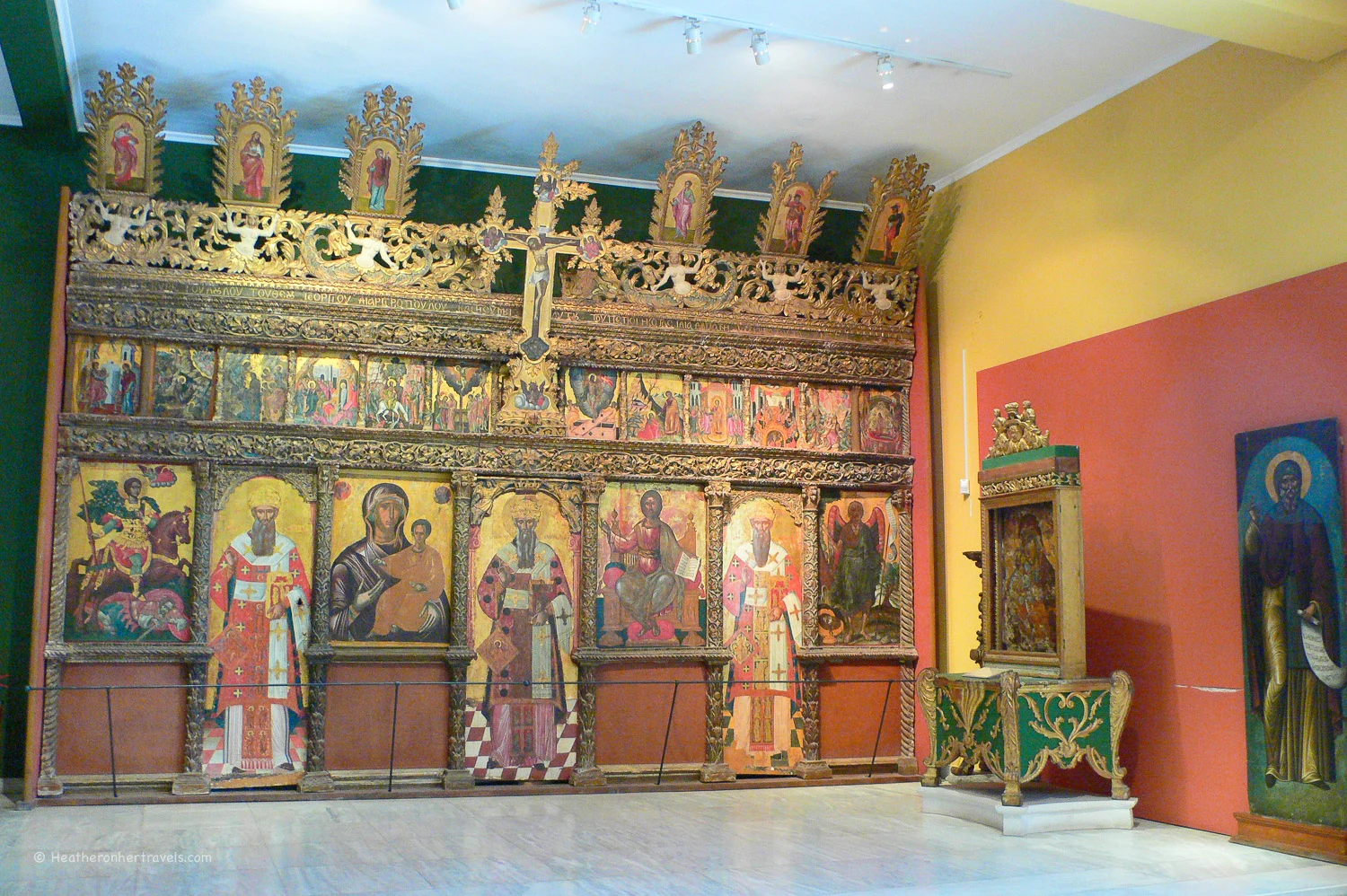
There are two floors of religious art from the 17th and 18th centuries. View panel paintings, icons and entire altar screens from locations around the island.
One of the rooms houses the 17th Century frescoes that were recovered from the Saint Andrea’s Monastery in Volimes to the North of the island. This gives an idea of how many of the older churches must have looked.
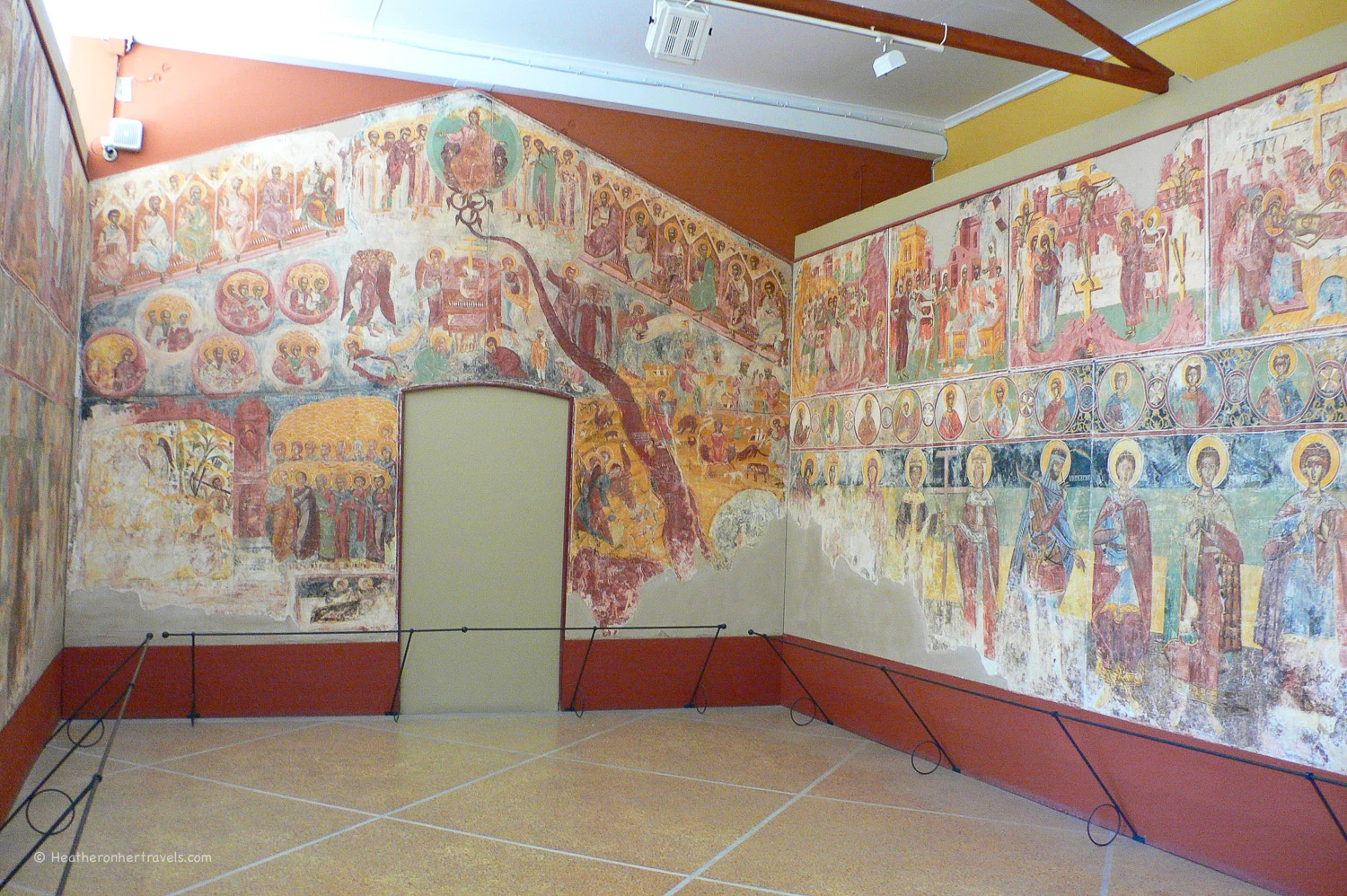
One of the most interesting things were the old photos throughout the museum of different parts of the island. These display how things were before and after the earthquake of 1953.
In the foyer there is also a model of the town that shows the layout of the town before the earthquake. You may be able to trace the changes around the harbour area.
The Monastery of St Denis near Volimes
To see more of the old monasteries that housed these religious paintings you might like to drive up to the north of the island. The area near the mountain village of Volimes is known for lace making and honey. The landscape in this part of the island is more rocky and barren and you’ll see the bee hives by the side of the road as you drive up.
The best known monastery is that of St Denis or Theotokos Anafonitria and is a popular stop for coaches on a tour of the island. St Denis is the patron saint of the island and was born into a wealthy family on the island in 1546. He later became Archbishop of Zakynthos and was canonised after his death.
You’ll find that many of the men on the island are named Denis after the Patron Saint. It’s the custom in Greece to celebrate your name day, rather than your birthday, St Denis’s day is one big party on the island.
The church is in a small walled compound with a bell tower. The inside is quite bare apart from the decorative altarpiece and the icon of Madonna and Child. She is adorned with rows of gold jewellery left by faithful pilgrims.
When visiting churches in Greece you should make sure that you are correctly dressed with covered shoulders for ladies and long trousers for men. The Greeks would never think of visiting as if dressed for the beach.
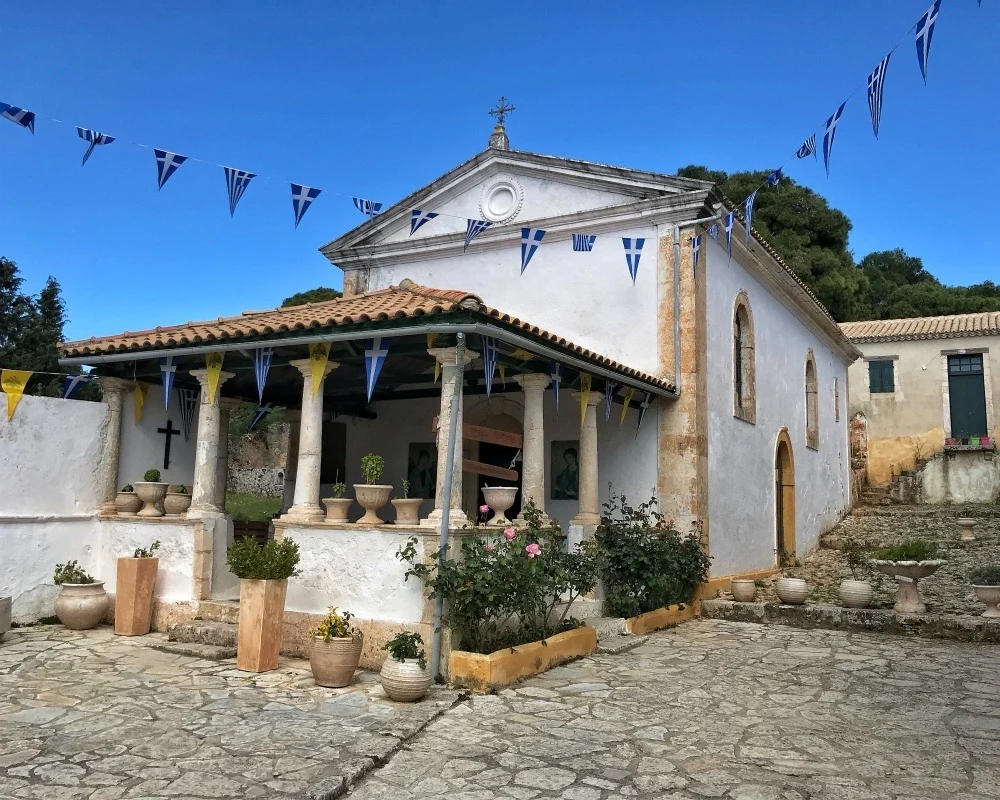
Monastery of St Georgios Krimmon
Further up the same road is the monastery of St Georgios Krimnon, a little larger but built in a similar style. There’s a defensive tower and church inside the enclosure, and cloisters along one side of the courtyard. A large bell hangs outside from the olive trees.
While you’re in the area, be sure to visit the shops selling handmade lace in Volimes. Then, drive on to the viewing point for one of the most famous beaches on the island (if not in the world.) Navagio or Smuggler’s Cove is where there is a picturesque shipwreck on the crescent of sand.
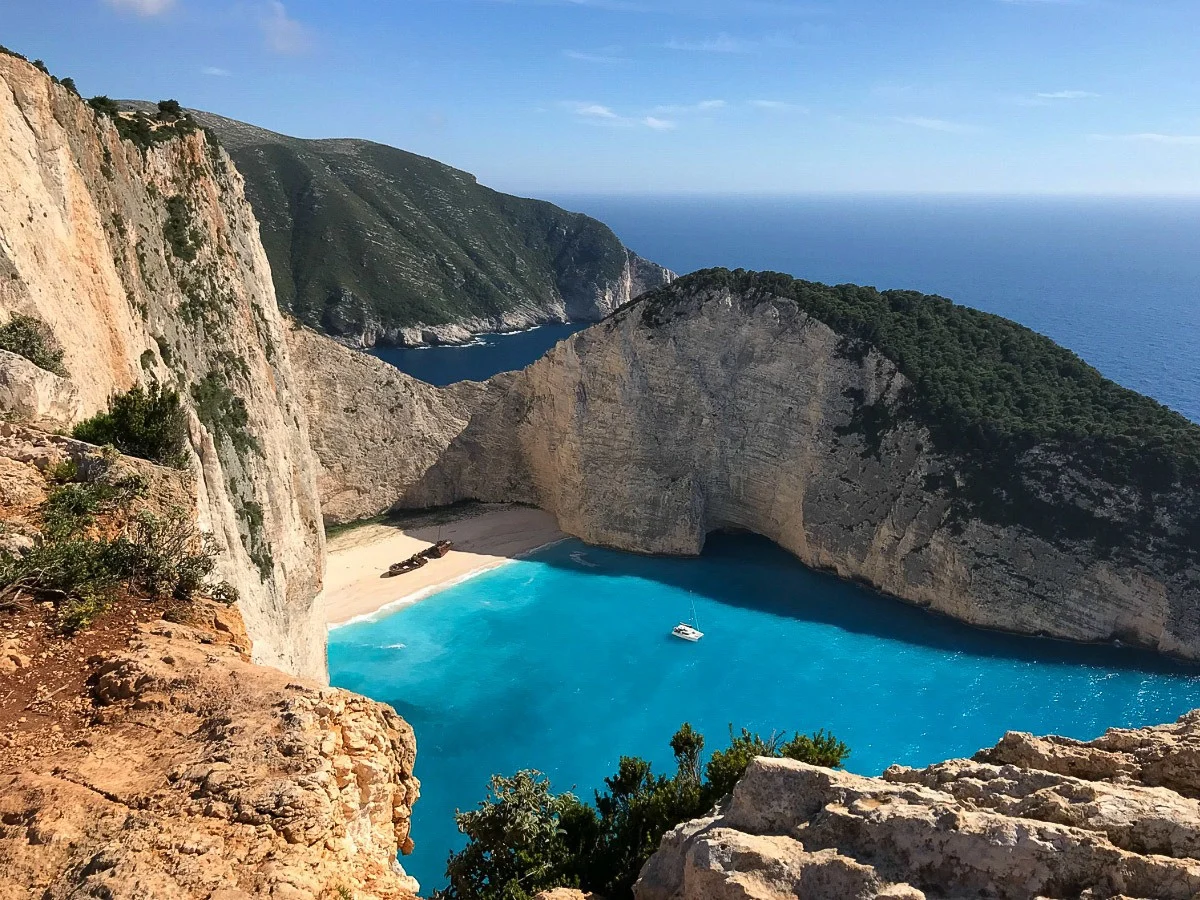
On Zakynthos the beach and the sea is never far away but it can also be fascinating to find out a little more about the history of this lovely Ionian island.
Read next
Read more about the Venetian Fort at Bohali on Zakynthos
More about Zakynthos
A tour of Romas Mansion on Zakynthos
Religious art from before the earthquake on Zakynthos
Visiting St Denis Monastery on Zakynthos
This article is originally published at Heatheronhertravels.com

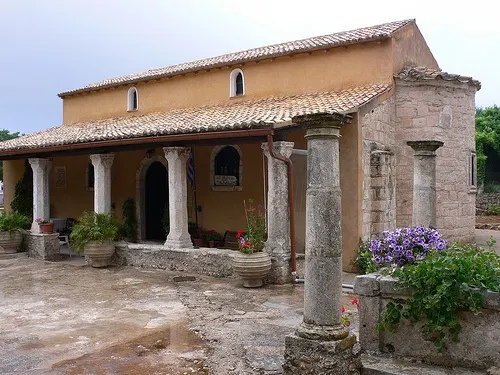
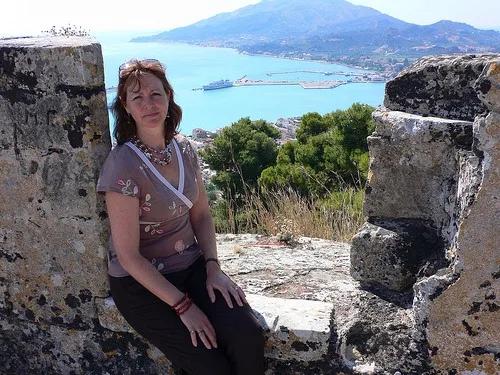

Navagio Beach, the best beach in Zakynthos
Wednesday 25th of July 2012
[...] scattered around an amazing Mediterranean Sea, they all bear their own charm and magic. When you visit Zakynthos, a trip to Navagio Beach, that is, the Shipwreck Cove, is a must. It is located on the north west [...]
On the party flight to Zante – Greece_Go Time Travel Blog | Go Time Travel Blog
Monday 16th of July 2012
[...] I feel like (Greek) dancing – at the Windmill Hotel (video) A turtle spotting boat trip on Zante (video) Exploring the history of Zakynthos in Greece [...]
Barbara Weibel
Thursday 1st of March 2012
Oh my - the photo of the beach sealed the deal for me. I have to go!